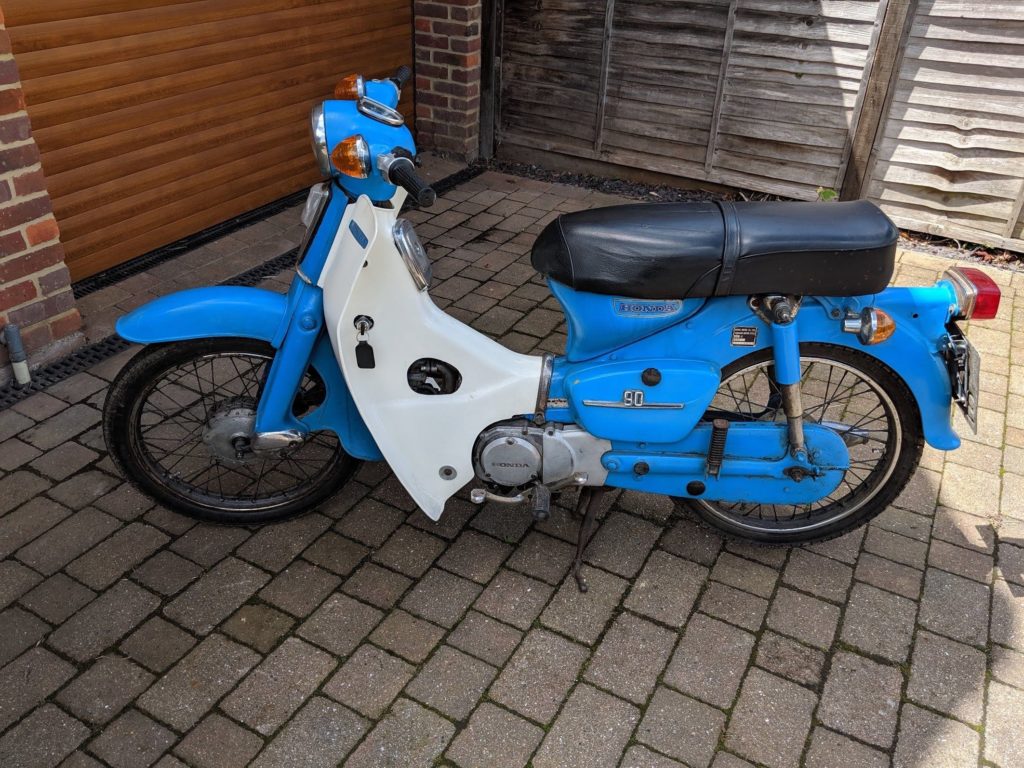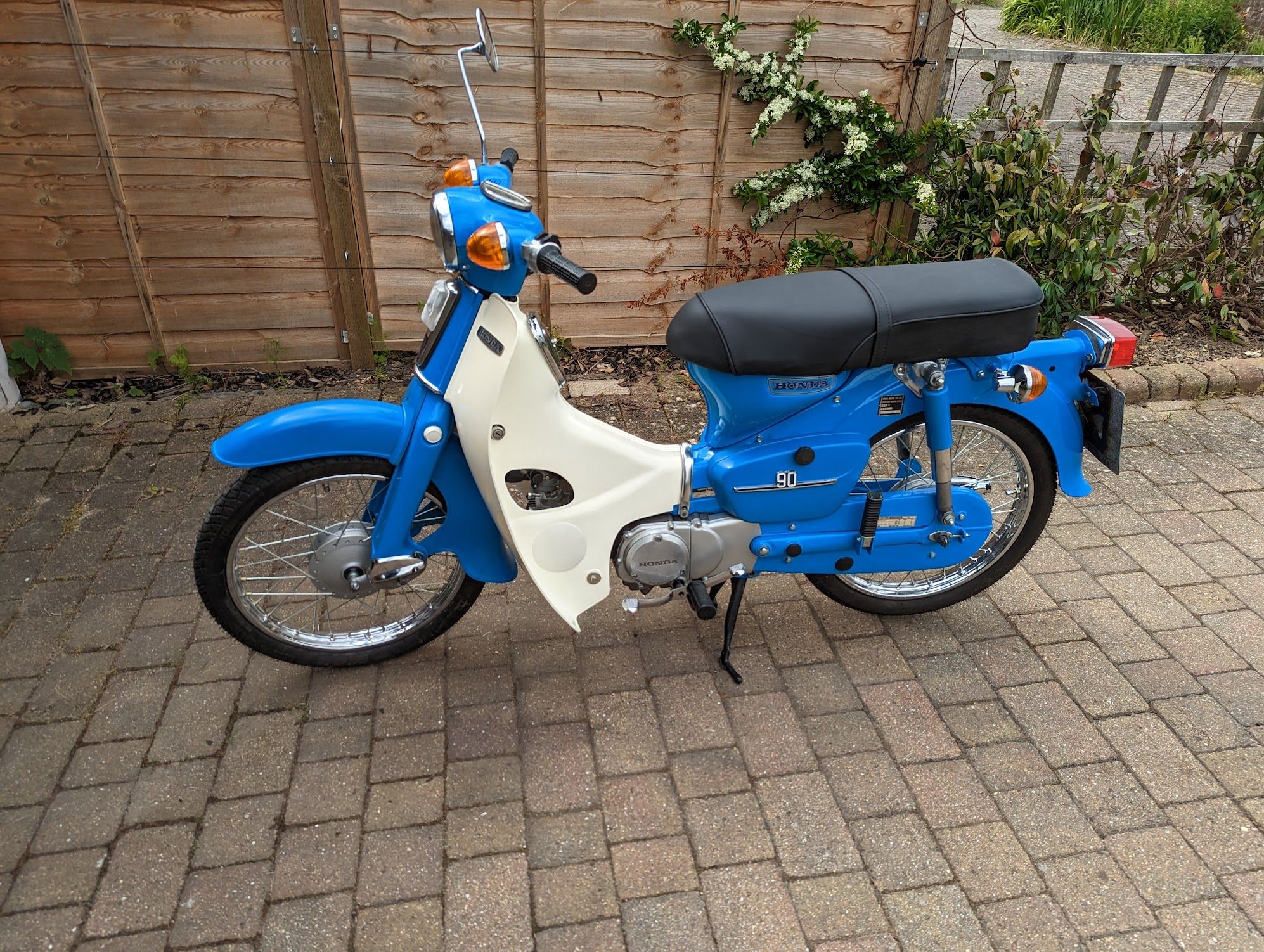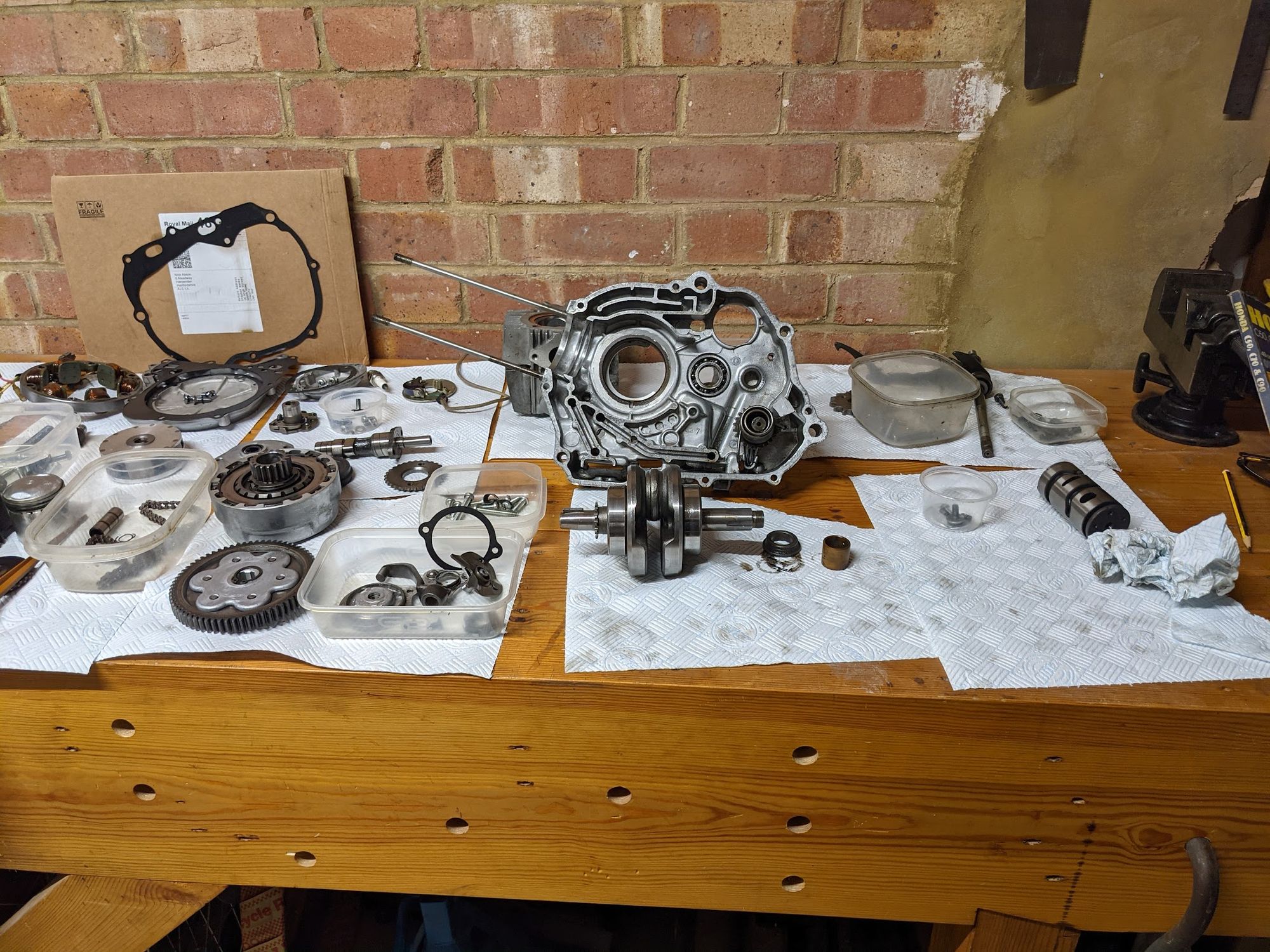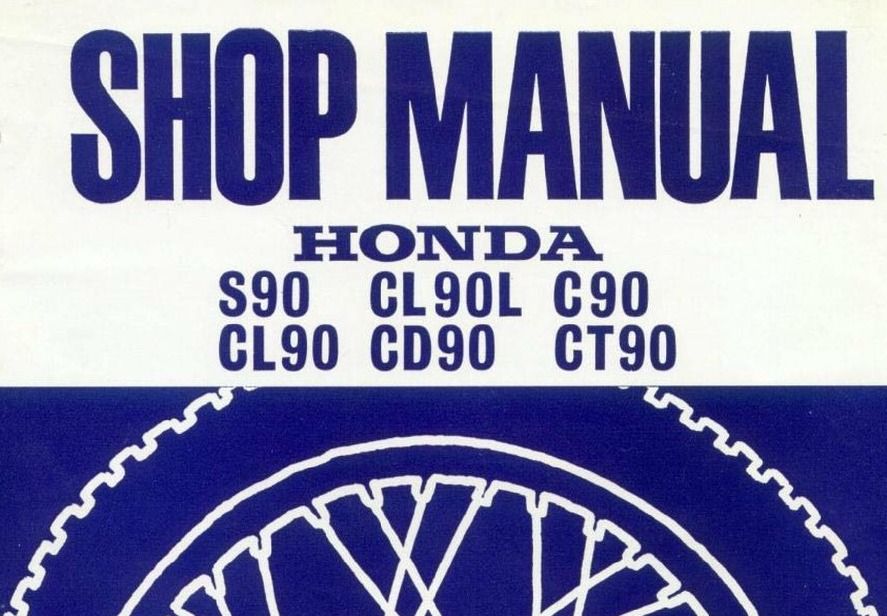Introduction
Honda’s Super Cub step-through motorcycle is the most successful motor vehicle ever built and a staggering number – well over 100 million – have been sold.


my 1978 Honda C90z2 before and after I refurbished it
I was lucky enough to find a low mileage 1978 C90 for sale a few miles from where I live. It ran for about half a mile before conking out so I pushed it the remainder of the way (6 miles!). Not an auspicious start...
After getting it home I cleaned the carburettor; flushed out the fuel tank; charged the battery and - much to my surprise - it started. An oil change and some other minor adjustments followed and it was running again, albeit not very smoothly.
Other than simple maintenance tasks on cars and bikes, I hadn't done any automotive mechanical work before so this was exciting stuff and - emboldened by my early success - I decided to attempt a complete restoration, hoping to learn a bit about how engines work along the way. Since my initial ham-fisted mechanical efforts I've gone back over all the repair and maintenance work I did to restore the bike and have written up what I learned - and what I got wrong - in this blog.
maintenance and repairs
Just about all of the "how to" information in the blog is taken directly from the Honda workshop manuals and I've included the screenshots from the manuals where relevant. I've also uploaded copies of my manuals here if you prefer to refer to them directly.
Because these manuals were written by the people who designed and built the bikes they are easily the best source of maintenance and repair information, however they were written primarily for trained mechanics and sometimes assume basic knowledge that us amateurs may not always have. Where I've included background information or historical context to try and help explain the instructions in the manuals it is because it is information I wish I'd had when I started out, and I hope you find it useful too.
Although I've done everything I can to carefully research each topic, I only do this as a hobby and I am sure I've made mistakes here and there. Feel free to leave a comment if you see anything wrong.
A summary of information related to repairing and restoring the bike is here:

You can use the menu and search functions above to find more detailed technical information on the bike.
Model history and manuals
... and you can find a bit about the history of the Super Cub in the Shop Manual article:

